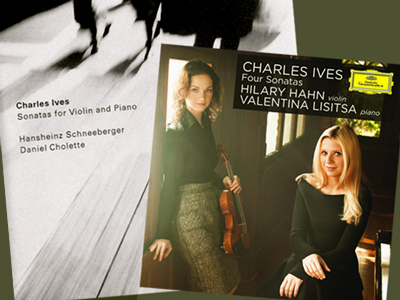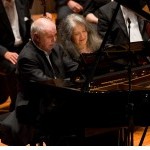by Sedgwick Clark
The bloated pomposity of Lorin Maazel’s “interpretation” of the Star-Spangled Banner was the first reason PK swore off his concerts. I’m certain she would have been relieved initially by Alan Gilbert’s spiffy tempo last night at the New York Philharmonic’s season opener. But by the final cadence I could imagine her saying, “There’s no singing line. No freedom.” Ever the contrarian, I would point out that he slowed the tempo for the final couplet. “That was an intellectual decision—where was the feeling?” I can’t disagree. Loosen up, Maestro: It’s okay to love our national anthem.
I wanted to shout, “Sing out, Louise,” during Gilbert’s curiously muted performance of the concert’s first work, Ravel’s Dawn Song of the Jester, better known as Alborado del gracioso. There was no fun, no lilt, no rhythmic snap or abandon in fortissimos, no atmosphere or yearning in the quiet middle section. As usual with the Philharmonic strings in Avery Fisher Hall, massed pizzicatos—so important in this piece for their evocation of Spanish guitars—went for nothing. It doesn’t help that conductors these days see a pianissimo marking and have the strings play at the brink of audibility. Nor is it helpful to drape a (festive?) curtain over the back reflecting wall of the stage.
But everything changed the moment the evening’s soloist, cellist Yo-Yo Ma, walked onstage. Working with a musician with such a natural sense of rubato and expressiveness, Gilbert loosened up too. Osvaldo Golijov’s Azul, for cello and orchestra, bathes the listener in a half hour of lambent melody, and it was gorgeously played by all. Equally enticing was the tuneful Suite from Piazzolla’s La serie del Ángel, which followed.
The gala ended with a smashing performance of Ravel’s Boléro. The Philharmonic is in great shape these days, and it will be fun to compare this with the Philadelphia’s performance at Carnegie Hall’s opening next week.
Looking Forward
My week’s scheduled concerts (8:00 p.m. unless otherwise noted):
9/28 Metropolitan Opera. Mozart: Così fan tutte. James Levine (cond.) Susanna Phillips (Fiordiligi), Isabel Leonard (Dorabella), Danielle de Niese (Despina), Matthew Polenzani (Ferrando), Rodion Pogossov (Guglielmo), Maurizio Muraro (Don Alfonso).
10/2 at 7:00. Carnegie Hall. Philadelphia Orchestra/Yannick Nézet-Séguin; Joshua Bell, violin; Esperanza Spalding , vocals and double bass. Tchaikovsky: Slavonic March. Saint-Saëns: Introduction and Rondo Capriccioso. Ravel: Tzigane. Saint-Saëns: Bacchanale from Samson and Dalila. Performances by Esperanza Spalding. Ravel: Boléro.
10/3 Carnegie Hall. American Symphony Orchestra/Leon Botstein. Antheil: A Jazz Symphony. Griffes: Poem. Ruggles: Men and Mountains. Copland: Organ Symphony. Varèse: Amériques.



